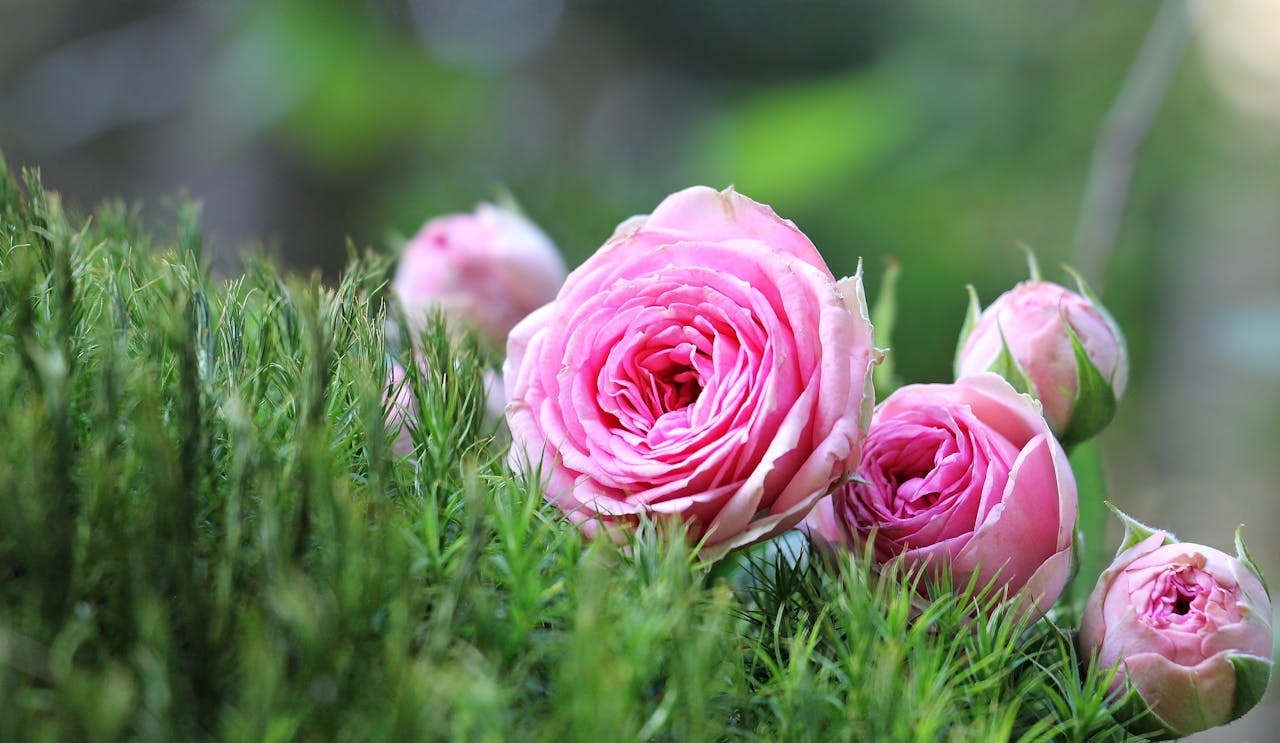Scentless Roses - Benefits And Best Varieties For Your Garden
Discover the benefits of scentless roses! Perfect for allergy-friendly gardens, these roses offer beauty without the fragrance.
Nov 05, 20245.9K Shares214.1K Views

Scentless roses present a captivating alternative to their fragrant counterparts, offering unique advantages for gardeners and floral enthusiasts alike. While many people associate roses with their delightful aroma, the scentless varieties possess charm and benefits that make them worth considering.
Understanding these roses can enhance your gardening experience, particularly for those with sensitivities to fragrances or allergies. In a world increasingly focused on creating spaces that cater to diverse needs, scentless roses stand out as an elegant choice.
What Are Scentless Roses?
Scentless roses are varieties that lack the strong fragrances typically associated with most roses. This characteristic can be attributed to genetic factors that inhibit the production of aromatic compounds. Common types of scentless roses include some hybrids and specific cultivars known for their vibrant blooms and hardiness. Exploring the various types of rosesavailable can help you choose the best options for your garden.
These roses come in various colors and shapes, showcasing the beauty of roses without the overwhelming scent. They provide an excellent option for creating visually stunning gardens while catering to individuals who prefer a more subtle experience. Moreover, the absence of scent does not diminish their aesthetic appeal; in fact, many gardeners appreciate the chance to focus purely on color and form.
The Science Behind Their Lack Of Scent
The absence of fragrance in scentless roses can often be linked to specific genetic traits. While many roses have evolved to produce scents that attract pollinators, some varieties have developed without this trait, focusing instead on visual appeal.
In contrast to scented roses, which often possess compounds like phenylpropanoids responsible for their delightful aromas, scentless varieties may lack these genetic pathways entirely. This genetic divergence highlights the diversity within the rose family and provides options for gardeners seeking non-scented flowers.
Research has shown that certain environmental factors can also influence a rose's scent production. For example, growing conditions such as soil composition, sunlight exposure, and temperature can impact the volatile compounds released by the plant. Understanding these factors is crucial for those looking to cultivate roses, whether they prefer fragrant or scentless varieties.
Benefits Of Scentless Roses
Ideal For Allergy Sufferers
One of the most significant advantages of scentless roses is their suitability for allergy sufferers. Many individuals experience allergic reactionsto the volatile compounds found in fragrant flowers, leading to discomfort during peak blooming seasons.
Scentless roses allow those with sensitivities to enjoy the beauty of roses without the risk of triggering allergies. This benefit makes them a fantastic choice for gardens, public spaces, or floral arrangements where people might have varying sensitivities.
In addition to their lack of scent, these roses can also be a safer option for pets. Certain aromatic plants can cause reactions in animals, but scentless roses tend to be less problematic, adding to their appeal for family-friendly gardens.
Long-Lasting Blooms
Scentless roses are often noted for their longevity in bloom. Compared to some fragrant varieties, scentless roses tend to have a longer flowering period, which enhances their value in gardens and floral displays.
Their ability to withstand various environmental conditions contributes to their extended bloom time. Many gardeners appreciate this feature, as it allows for a more sustained visual display throughout the growing season. Additionally, these roses often require less frequent deadheading compared to scented varieties, making them lower maintenance.
Gardeners looking to create long-lasting displays can benefit from choosing scentless roses. By planting various colors and types, one can achieve a continuous bloom cycle, ensuring that the garden remains vibrant from spring through fall.
Versatility In Landscaping
The versatility of scentless roses is another compelling reason to include them in your garden. They fit well into various landscaping designs, from traditional to modern aesthetics.
- Cottage Gardens: Their vibrant colors can create a charming, rustic appeal.
- Formal Gardens: When trimmed and shaped, they can enhance structured layouts.
- Xeriscaping: Drought-resistant varieties can thrive in low-water landscapes.
Incorporating scentless roses into your garden design allows for creative expression while maintaining a beautiful environment. For inspiration, consider exploring various rose garden ideasthat showcase these stunning blooms, helping you design a space that reflects your personal style.
Aesthetic Appeal
Beyond their functional benefits, scentless roses offer undeniable aesthetic appeal. They are available in a wide range of colors, from classic reds and whites to more unusual shades like lavenderand peach.
The visual beauty of these roses can enhance any garden or floral arrangement, providing a captivating display. Their shapes and sizes also vary, allowing for creative arrangements in bouquets and centerpieces. Understanding the rich symbolism associated with rosescan further deepen your appreciation for these blooms, making them a meaningful choice for any garden.
For floral designers, scentless roses can be a game-changer. They allow for stunning arrangements without the concern of overpowering fragrances, making them ideal for events where guests may have scent sensitivities. This aspect opens up possibilities for more inclusive celebrations and gatherings.
Growing And Caring For Scentless Roses
Planting Tips
Planting scentless roses involves a few key considerations to ensure healthy growth. Here are some essential tips:
- Soil Requirements: Roses thrive in well-draining soil rich in organic matter. A pH level between 6.0 and 6.8 is ideal.
- Best Planting Times: Early spring or fall are the best times to plant scentless roses. This timing allows them to establish roots before the heat of summer or the cold of winter.
- Spacing: Adequate spacing is crucial for airflow and sunlight. Plant roses about 2 to 3 feet apart, depending on the variety. Understanding the factors that influence plant developmentcan significantly enhance the growth and health of your roses.
By adhering to these guidelines, gardeners can establish a flourishing rose garden that showcases the beauty of scentless varieties. It’s also advisable to mulch around the plants to retain moisture and suppress weeds, enhancing their growth potential.
Maintenance And Care
Caring for scentless roses requires consistent attention but is manageable for both novice and experienced gardeners. Here are essential maintenance practices:
- Watering: Regular watering is vital, particularly during dry spells. Deep watering encourages strong root systems.
- Fertilization: Use a balanced fertilizer during the growing season to promote healthy growth and blooming. Organic options can enhance soil quality.
- Pest and Disease Management: Regularly inspect plants for pests such as aphids or spider mites. Implement natural remedies or pesticides when necessary to keep plants healthy.
In addition, pruning is a key aspect of maintaining scentless roses. Pruning helps promote airflow, reducing the risk of disease, and encourages new growth. It’s best to prune in late winter or early spring before new growth starts.
The Nutritional And Medicinal Benefits Of Roses
In addition to their aesthetic appeal, roses - especially their petals - offer a range of health benefits. Scentless varieties are no exception.
Skin Health And Radiance
Rich in vitamins A and E, rose petals contribute to beautiful skin by hydrating and tightening. This nourishment reduces the prominence of fine lines and dark circles, supporting the body's natural collagen production essential for healthy skin, hair, and nails.
The anti-inflammatory and antibacterial properties of rose petals can help reduce breakouts and calm skin conditions like rosacea and eczema. Regular use of rose-infused products can lead to a radiant, youthful complexion.
Easing PMS Symptoms
Rose petals possess anti-inflammatory properties that can help alleviate premenstrual syndrome (PMS) symptoms. Conditions such as bloating, cramps, and mood swings can be mitigated by consuming rose tea. Many studies have indicated that participants experienced significant relief from discomfortafter incorporating rose tea into their routines.
Mood Enhancement
Roses are celebrated for their ability to boost mood and relieve stress. The calming scent of rose can create a soothing atmosphere, making it easier to unwind. Sipping on rose tea or simply inhaling the vapor can promote relaxation and restful sleep. This makes roses a valuable addition to self-care rituals.
Immune Support
Roses are packed with vitamin C, which supports white blood cell production and helps the body fend off infections. The antioxidants found in rose petals combat oxidative stress, reducing the risk of chronic diseases and premature aging. Including roses in your diet can bolster overall health and wellness.
Digestive Aid
Historically, rose petals have been used to alleviate digestive discomfort. Consuming rose tea can ease stomach upset, gas, and bloating, contributing to better gut health. The natural properties of roses promote healthy digestion, making them a valuable component of a balanced diet.
FAQs
Are Scentless Roses As Beautiful As Scented Ones?
Absolutely. Scentless roses can be just as visually appealing as their fragrant counterparts. They come in diverse colors, shapes, and sizes, offering a wide array of options for gardeners and floral enthusiasts.
Can Scentless Roses Be Used In Bouquets?
Yes, scentless roses are perfect for bouquets. Their vibrant colors and long-lasting blooms make them a popular choice for floral arrangements, allowing for creative designs without the concern of overwhelming fragrance.
How Do I Know If A Rose Is Scentless?
Identifying scentless roses typically involves checking the variety and consulting plant labels or descriptions. Many horticultural resources provide information on the scent profile of specific rose types, helping you select the right ones for your garden.
Are Scentless Roses More Resilient Than Scented Ones?
While resilience can vary by variety, many scentless roses are bred for hardiness, making them suitable for diverse climates. Their ability to adapt to different environmental conditions often enhances their longevity in gardens.
Conclusion
Scentless roses present an excellent option for those seeking beautiful blooms without the accompanying fragrance. Their allergy-friendly nature, long-lasting flowers, and versatility in landscaping make them valuable additions to any garden.
Incorporating these roses into your garden design can lead to a visually appealing and low-maintenance environment. The beauty of scentless roses allows for personal expression in gardening, making them a wonderful choice for everyone - from novice gardeners to seasoned horticulturists.
Embrace the charm of scentless roses and enhance your gardening experience today, ensuring that everyone can enjoy the beauty of flowers in their outdoor spaces.
Latest Articles
Popular Articles

